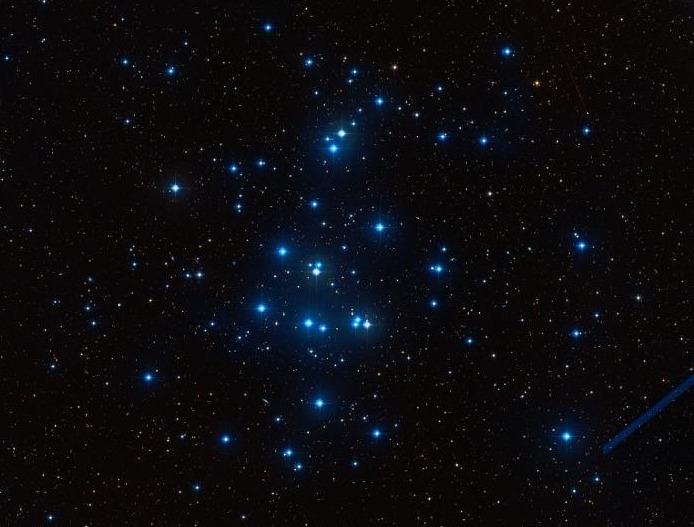The Beehive Cluster, also known as Messier 44 (M44) or Praesepe, is a prominent open star cluster located in the northern constellation of Cancer. Positioned about 577 light-years from Earth, this striking cluster is a favorite among amateur astronomers, offering a rich view through binoculars and small telescopes due to its dense concentration of stars and notable brightness.
M44 has a storied history, having been known since ancient times and observed by numerous cultures across the ages. The Greek astronomer Hipparchus cataloged it as early as the 2nd century BCE, and later, in the 18th century, it was added to Charles Messier’s famous catalog of comet-like objects. Praesepe, meaning “manger” in Latin, reflects its historical significance as a known object in the night sky long before the advent of modern telescopes.
Physical Characteristics
The Beehive Cluster spans approximately 95 light-years across and contains several hundred stars, although only a small number are visible to the naked eye under ideal conditions. The stars within M44 are relatively young by astronomical standards, estimated to be around 600 million years old. Many of these stars are hot, blue-white main-sequence stars, with a sprinkling of cooler, red stars adding a colour contrast. This combination of youthful stars and the cluster’s location within the Milky Way’s disk suggests that M44 formed relatively recently, likely originating from a dense molecular cloud of gas and dust.

The open structure of the Beehive Cluster sets it apart from more tightly bound globular clusters. Its stars are loosely held by gravity, meaning they are slowly dispersing over time. This characteristic offers a valuable look into the dynamics of young star clusters and the early stages of stellar evolution.
Observation
Situated between the stars Castor and Pollux in Gemini and Regulus in Leo, M44 is conveniently located for observers in both the Northern and Southern Hemispheres. It is, however, better positioned for those in northern latitudes, particularly during the late winter and early spring months (February to April), when the constellation Cancer reaches a favourable altitude in the night sky. With an apparent magnitude of around 3.7, the Beehive Cluster is visible to the naked eye from dark-sky locations, where it appears as a faint, fuzzy patch.

Using binoculars or a small telescope reveals M44 in greater detail, where it emerges as a tightly packed group of stars, spanning a diameter of approximately 1.5 degrees—about three times the apparent size of the full moon. Under magnification, individual stars become visible, showcasing the full beauty of the cluster and its intriguing variety of star types and colours.
In summary, the Beehive Cluster is a beautiful and accessible target for amateur astronomers, offering a captivating glimpse into stellar evolution and star formation within our galaxy. Its brilliant stars and intriguing history make it one of the most celebrated open clusters in the night sky.



